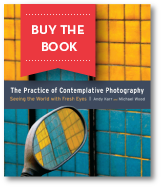Q&A With the Authors
We would love to hear from you. Please post your questions about contemplative photography, comments about the book, or other observations about contemplative mind and life. We will do our best to respond to whatever you post. (Please keep in mind that we are running as fast as we can, and may not get to this as soon we would like.)

